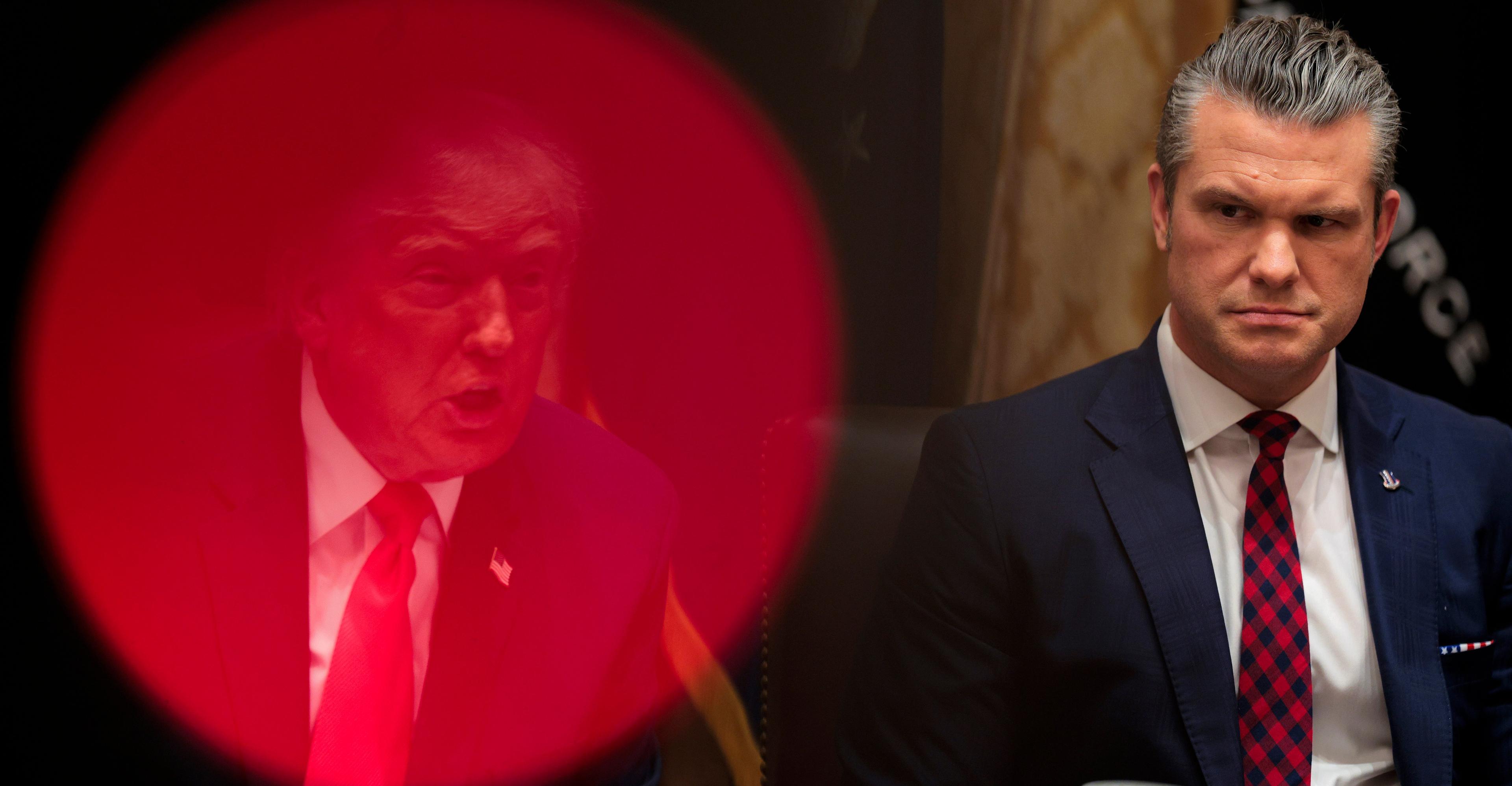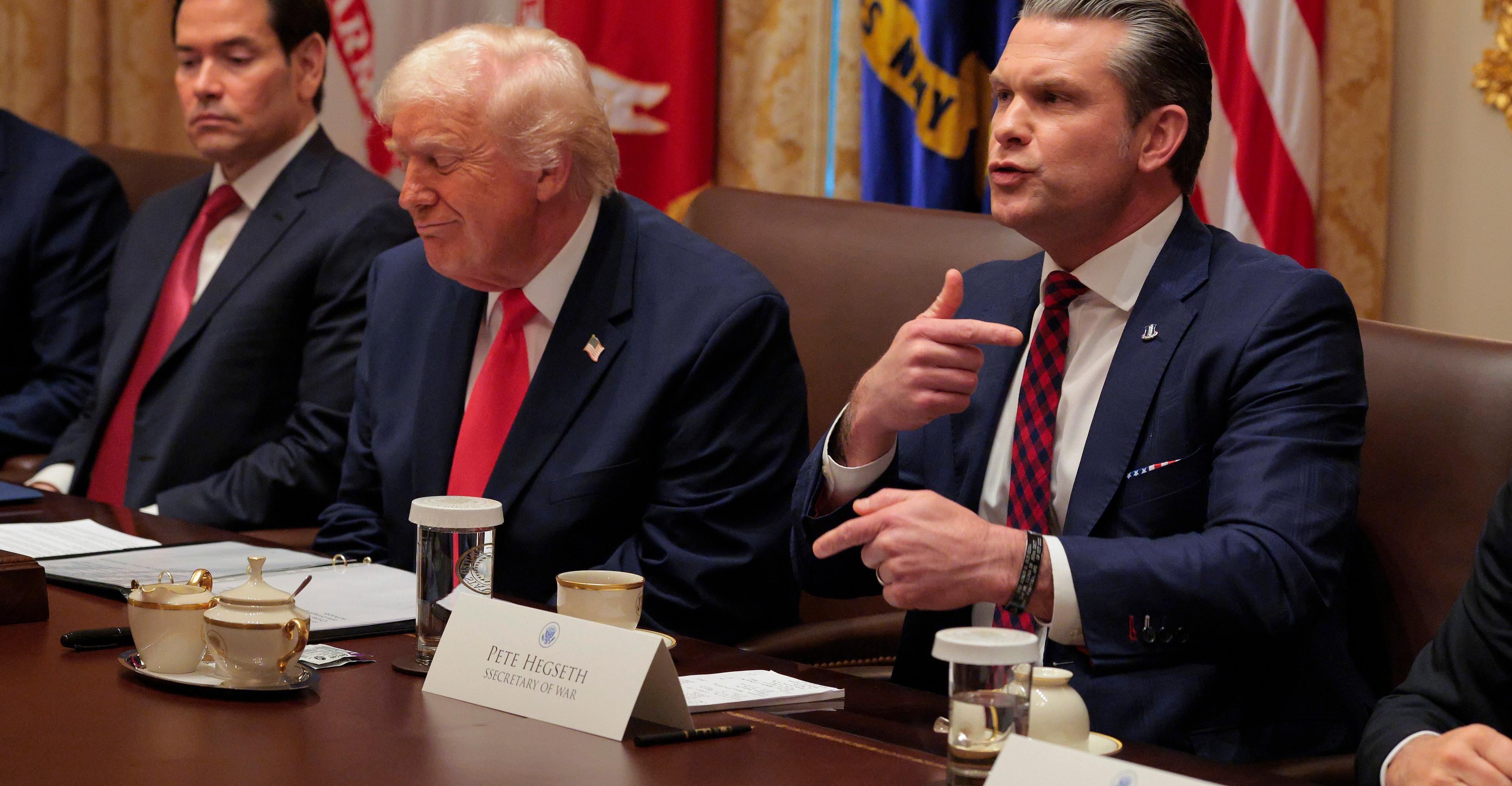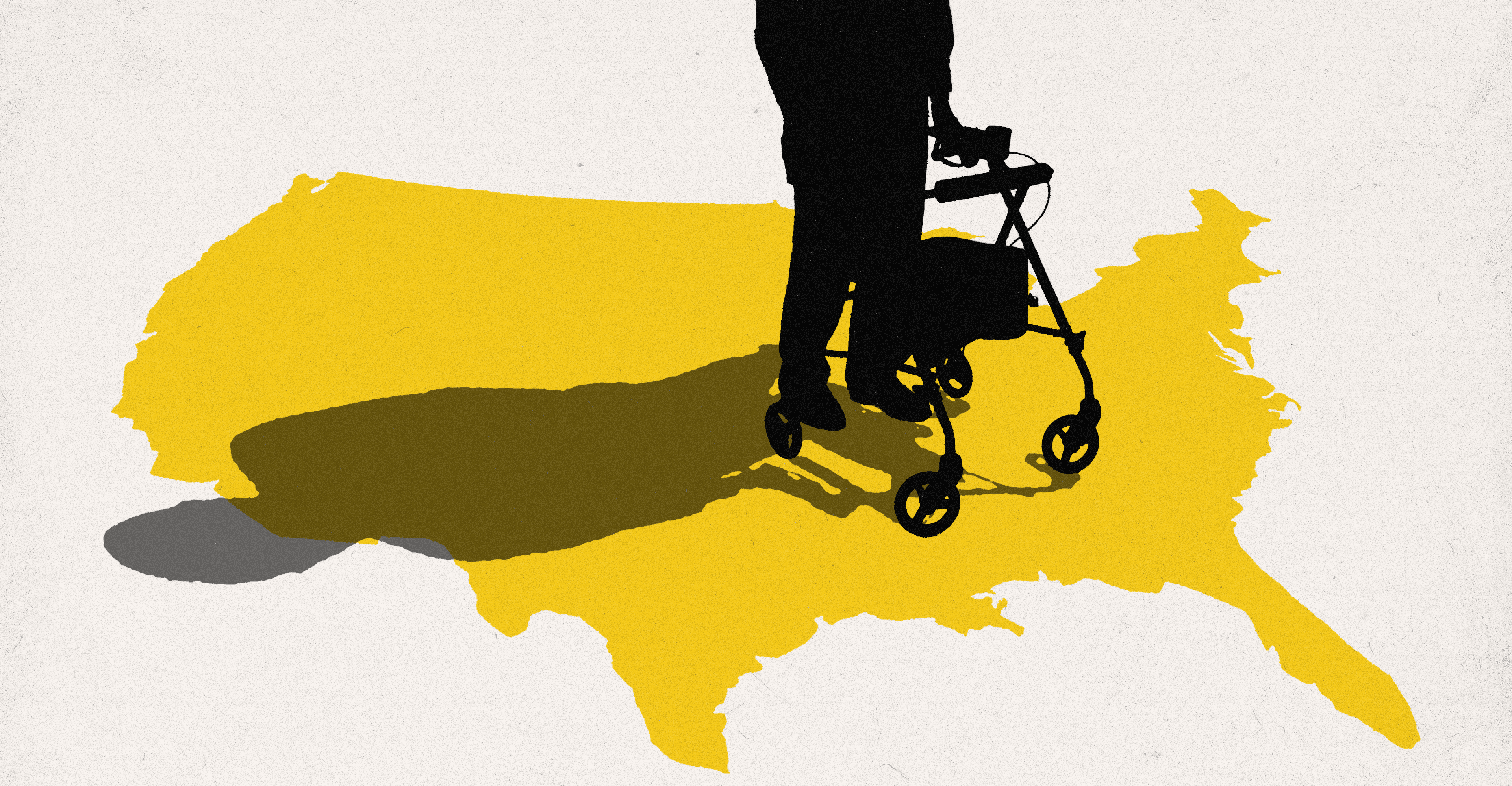TAIPEI, Taiwan — When most people imagine what war in the Taiwan Strait might look like, scenes out of eastern Ukraine in 2022 or even Normandy in 1944 tend to come to mind. Picture transport ships from China facing incoming anti-ship missiles; missile strik…

Published ایک سال قبل on دسمبر 17 2024، 12:00 شام
By Web Desk

TAIPEI, Taiwan — When most people imagine what war in the Taiwan Strait might look like, scenes out of eastern Ukraine in 2022 or even Normandy in 1944 tend to come to mind.
Picture transport ships from China facing incoming anti-ship missiles; missile strikes blowing holes in airfields and key military installations; hilltop-to-hilltop fighting over rugged mountainous terrain; and urban warfare amid the skyscrapers of densely populated cities. If Washington came to Taiwan’s aid in the event of a full-scale war, experts believe that in just a few weeks of intense naval warfare, the US could face the kind of casualties not seen since the Second World War.
Versions of these scenarios loom heavily over policy debates in Washington, DC. Chinese President Xi Jinping has repeatedly vowed to achieve “reunification” with Taiwan, and barely a day goes by without Chinese jets and ships encroaching on Taiwan’s space. In recent days, China responded to Taiwanese President William Lai’s stopover in Hawaii during an international trip by deploying the largest naval fleet in decades to waters near Taiwan, the latest example of a pattern in which Beijing uses military drills to signal its displeasure over displays of Taiwanese sovereignty. Many US policymakers and experts believe China aims to be ready to seize the island by 2027, and that fear has driven a good portion of American strategic planning and billions of dollars in defense spending in recent years.
Add to this a wild card: President-elect Donald Trump. On the one hand, most of Trump’s prospective national security team are united by an extremely hawkish and suspicious view of China, and a belief that the US’s No. 1 defense priority should be preparing for a potential conflict with the People’s Republic. On the other hand, Trump has vacillated on whether he believes America has an obligation to defend Taiwan, making it hard to predict whether he would come to its defense in the event of a Chinese attack.
But the way we think about how China would overrun Taiwan may well be wrong. Rather than an all-out invasion, it could attempt to capture the island without firing a single shot through “gray zone” tactics. Such tactics might combine maritime blockades and advanced cyberwarfare capable of cutting off Taiwan from the lines of seaborne trade and the digital access it needs to survive. And Beijing could do so in a way that might be just far enough below the threshold of conflict that would drive Washington and its allies to come to Taiwan’s aid.
What I saw when I visited Taiwan
The US has been committed to Taiwan’s defense for decades. But in recent years, the island’s strategic importance has been further enhanced by its central role in high-tech globalization, producing over 60 percent of global semiconductors despite its controversial political status. While this trade has made Taiwan both wealthy — nearly three times richer on a per capita GDP basis than China — and vital to the global economy, it has also created critical weak points that Beijing can exploit. The island depends heavily on foreign food and energy supplies, and its information infrastructure is susceptible to disruption through cyberattacks and physical interference with internet cables. All this means that some of Taiwan’s greatest vulnerabilities to coercion and aggression have little to do with the military questions that tend to obsess American experts and everything to do with its links to the rest of the world.
Given all this, you might think that Taiwan would feel like a place on edge. Yet when I visited the island several weeks before the US election, it hardly seemed like a place preparing for a potentially catastrophic invasion.
In Taipei, the city’s trendy coffee shops are full and its famous night markets are bustling beneath a thicket of skyscrapers. Half an hour south of the capital in Hsinchu, the semiconductor manufacturing center sometimes called Taiwan’s Silicon Valley, the high-speed rail station is packed with Western business travelers, attesting to the island’s irreplaceable role in the global technology supply chain. The government officials I met with, about four months after Lai took office in the face of Chinese opposition, discussed economic and social plans on timelines that stretch well beyond the next few years. Faced with an open-ended existential threat of the sort few nations have to endure, one that has lasted for the better part of 75 years, the Taiwanese mostly keep doing what they’ve been doing: building what has become Asia’s most vibrant democracy.
Taiwan’s future will depend in part on how much China’s Xi is willing to risk to take it, and how much Trump is willing to risk to protect it. But it’s also clear that the task of defending the island rests as much on the response of Taiwan’s 23.5 million-strong civilian population as it does with any military response. And that’s why in every important sector, from energy to food to high-tech manufacturing, Taiwan’s government is developing security strategies designed to allow an island that has thrived on global connections to at least survive should Beijing attempt to cut it off.
How China could squeeze Taiwan
Taiwan has always existed in a state of ambiguity. The modern nation dates back to 1949, when the Chinese nationalist party known as the Kuomintang (KMT), led by Chiang Kai-shek, fled the mainland after being defeated by Mao Zedong’s communists. Chiang set up a government on the island, calling it the Republic of China — the very name indicating an intention of one day returning to retake power in the mainland.
Today, the island’s status is ambiguous. It is not a UN member state and only has formal diplomatic relations with a small handful of countries, not including the US. (The unofficial American Institute in Taiwan serves as the de facto US embassy in Taipei.) But despite that lack of formal ties, Washington has for decades provided Taiwan with substantial military assistance, assistance that has been key in keeping the island free from China’s control.
American leaders have become increasingly concerned that China is building up for an invasion in the coming years. It would be extraordinarily risky: Though Taiwan’s military is nearly seven times smaller than China’s by manpower, the island’s geography means that an invasion would be a massive undertaking that would lead to heavy casualties for the People’s Liberation Army (PLA). Russia’s experience in Ukraine is a reminder that invading powers shouldn’t assume they can simply roll over smaller neighbors.
[Image: Taiwanese soldiers stand guard next to a M109 American self-propelled howitzer, after a live-fire training at a coastal area in Taichung, Taiwan, on August 7, 2024. https://platform.vox.com/wp-content/uploads/sites/2/2024/12/gettyimages-2165148448.jpg?quality=90&strip=all]
A full-scale D-Day scenario is not the only option for Xi — or a future Chinese leader — to try to force Taiwan’s hand. A recent survey of Taiwanese and US national security experts found that while a majority in both countries do not believe China currently has the capability to carry out an amphibious invasion of Taiwan, most do believe China could currently enact either a blockade or a quarantine of the island. And such an operation may prove just as effective while carrying far less risk for Beijing.
In a blockade scenario, the People’s Republic of China (PRC) would use its military to cut off trade to the island and force it to capitulate or make major concessions on its sovereignty. A quarantine would be a subtler approach, with China using civilian law enforcement rather than naval vessels to interdict shipping, but it could have much the same effect.
Meeting in his office at Taiwan’s National Chengchi University, Liu Fu-kuo described what a quarantine might look like in practice. “It would really be quite easy,” he said. “The People’s Liberation Army doesn’t have to intercept [commercial ships]. They can use the Coast Guard or the maritime militia to delay them for two or three weeks; they don’t have to sink or destroy those ships. They can just take them to Hainan Island [PRC territory, more than 600 miles southeast of Taiwan] for inspections.”
Liu, the director of the Taiwan Center for Security Studies, has conducted tabletop exercises modeling a variety of scenarios for a China-Taiwan conflict. He explained that the quarantine strategy would have a number of advantages. China could make the case that it’s legal: Beijing claims both Taiwan and the sea surrounding it as its own territory, so it could say it’s merely carrying out law enforcement operations in its own waters.
China already has practice — its coast guard has been increasingly used as a tool for power projection from the Philippines to the Arctic. It could dial up or down the pressure depending on changing circumstances. And, most crucially, precisely because of its “gray zone” nature, the US and other regional powers would be less likely to intervene in a quarantine scenario.
Beijing might not even need to opt for ships. Some experts believe China could try a combination of economic pressure tactics and cyber-coercion to induce Taiwan into surrendering its sovereignty — a digital blockade for a digitally dependent nation. But that would depend on Taiwan folding under pressure, and polls show the overwhelming majority of Taiwanese oppose reunification. The erosion of Hong Kong’s democracy in recent years means they’re not likely to trust China’s assurances that Taiwan could maintain some degree of political autonomy under a “one country, two systems” model.
Shen Ming-shih, director of national security research at the military-affiliated think tank INDSR and one of Taiwan’s most prominent military analysts, told me he believes Xi’s purge of senior military leaders last year was a sign that in Beijing, “some of the generals don’t want to fight … because they don’t think they can win,” in a full-scale war scenario involving the United States. Because he can’t count on his own military leadership, Shen suggests Xi is currently “using a softer hand,” wielding military drills, economic pressure, and “cognitive warfare” to “put pressure on our ruling party.”
A blockade or quarantine could also be used not as a mere pressure tactic, but as a prelude to a military invasion. And while Taiwan’s island geography gives it natural defenses that Ukraine, for instance, didn’t have, it also comes with real disadvantages. Ukraine can be resupplied via its land borders with several European countries, which are all effectively protected from Russian attack (so far, at least) by their membership in NATO. This has allowed the US and other Western allies to provide aid to Ukraine without risking their own troops. But resupplying the island of Taiwan without putting their own forces at risk won’t be an option for the country’s allies if China invades: Outside powers will have to fight to break the blockade, or Taiwan will be left on its own.
“As Taiwan is an island, our shipping lanes are vulnerable to PRC blockades, which is one of the possible military actions PLA might consider against Taiwan,” Major General Sun Li-fang, spokesperson for Taiwan’s minister of defense, told me. “In order to maintain the security of our shipping lanes and resources, the [Taiwan] Armed Forces have closely monitored all PLA aircraft and vessels that entered our reaction zone and responded accordingly.”
But, Sun acknowledged, “We recognize that we do not have the capacity to deal with the threat we face all by ourselves.”
What would Trump do?
Beyond the human toll, the economic costs of a war in Taiwan, or even a major blockade, would be enormous. Around one-fifth of the world’s seaborne trade transits the Taiwan Strait, so this disruption alone would have a significantly greater impact on global trade than the ongoing attacks by Houthi rebels on shipping in the Red Sea.
Taiwan produces about two-thirds of the world’s semiconductors and more than 90 percent of the chips used for the most advanced functions like artificial intelligence, with most of them made by the world-beating Taiwan Semiconductor Manufacturing Company (TSMC). A 2022 estimate by the think tank Rhodium Group predicted that a blockade of Taiwan would cost the world at least $2 trillion in lost economic activity. Given how painful pandemic-caused disruptions to the chip supply chains were, it’s not an exaggeration to say cutting off Taiwan could see the digital economy grind to a halt. And today, the digital economy is the economy: Bloomberg has estimated that a war could cost about 10 percent of global GDP, more than the global financial crisis or the Covid-19 pandemic.
That cost is inevitably part of the calculation of answering one of the most important questions hanging over a conflict in Taiwan: how the US would respond. The Taiwan Relations Act, passed by Congress in 1979 after Washington established diplomatic relations with Beijing, states that the US will provide Taiwan with the means, including military aid, to defend itself and that it will consider “any effort to determine the future of Taiwan by other than peaceful means, including by boycotts or embargoes,” to be a threat to regional security.
But making that statement and backing it up are different matters.
In a chapter in The Boiling Moat: Urgent Steps to Defend Taiwan, a widely discussed collection of essays edited by former Trump administration deputy national security adviser Matt Pottinger, authors Robert Haddick, Elaine Luria, and Mark Montgomery conclude that Taiwan is highly vulnerable to a blockade and that attempting to break one would carry substantial escalation risks for both Taiwan and the United States.
“Breaking the blockade would require suppressing the PLA’s extensive battle network deployed and dispersed across southeast China,” they write. In their view, doing that would likely require a “prolonged bombing campaign of the Chinese mainland,” a step so drastic it’s rarely even been war-gamed, much less seriously considered.
Would a president really risk war with China — which, in this case, inherently involves the unknowably high risk of nuclear war — to defend Taiwan? Successive US administrations have declined to say whether the US would or would not go to war to protect Taiwan if it were attacked by China — a policy known as “strategic ambiguity.” President Joe Biden has said at least three times that the US would use force to defend Taiwan, which may not sound all that ambiguous, except that his national security staff walked it back each time.
At least some in Trump’s orbit agree that the US should prepare for a fight. Elbridge Colby, a former Trump administration Pentagon staffer considered by many to be a strong candidate for a senior role on the president-elect’s new team, told me in a 2022 interview that the US can’t be dissuaded by a nuclear threat: “At some point, we have to be willing to fight a war under the nuclear shadow. My view is the best way to avoid testing that proposition, which I absolutely don’t want to do, is to be visibly prepared for it.”
Trump’s own stance on Taiwan is Trumpian, which is to say, contradictory. After his first election, he overturned protocol by accepting a phone call from Taiwan’s then-President Tsai Ing-wen. His administration increased arms sales to Taiwan, including a sale of F-16 fighter jets that had been blocked by the Obama administration. Several high-ranking officials from his administration also visited Taiwan during Trump’s term, drawing protests from Beijing. Likely because of these steps, polls show Taiwan was one of the only East Asian countries where citizens favored Trump’s reelection in 2020.
On the other hand, Trump is generally skeptical of US defense guarantees, and Taiwan is no exception. According to his former national security adviser John Bolton, he once compared Taiwan to the tip of a sharpie and China to his desk to show how small and insignificant the island was. On the campaign trail, Trump said that Taiwan should pay the US more for its defense since “they took all of our chip business.”
The president-elect’s new team undoubtedly includes many China hawks, like secretary of state nominee Marco Rubio and national security adviser Michael Waltz. However, Trumpworld also includes figures like billionaire Elon Musk, who has extensive commercial interests in China and has suggested that Taiwan should be turned into a Hong Kong-style “special administrative zone.”
In a September interview with the Wall Street Journal, Trump said he would be able to prevent Chinese aggression by telling Xi, “If you go into Taiwan, I’m sorry to do this, I’m going to tax you”— meaning impose tariffs — “at 150 percent to 200 percent.” (Given that Beijing is well aware it would take an enormous economic hit if it attacked Taiwan — which, despite all the tension, was its sixth-largest trading partner as of 2022 — it’s far from clear how much of a deterrent US tariffs would be.) When asked specifically if he would use military force to break a blockade, Trump said, “I wouldn’t have to, because he respects me and he knows I’m fucking crazy.”
So the ambiguity is still there, albeit phrased in more colorful language than previous presidents — whether it’s strategic remains to be seen. All of this means that it is more important than ever for Taiwan to pursue policies of its own that can make the island and its people as resilient as possible.
But it also faces a conundrum: The global interconnection that has enabled Taiwan to become so prosperous also makes it so vulnerable. Is there a way to protect itself without losing what makes Taiwan Taiwan?
Can Taiwan keep the lights on?
I got a glimpse of one small way Taiwan is looking to address a key vulnerability at an industrial park outside of Tainan, which sits on the southwestern coast facing China. In the center of the park, an array of solar panels floats serenely on a rainwater drainage pond with the poetic name “Wind of the Lily.” It’s a scenic spot, with birds perched by the shore and fish swimming underneath the solar panels on the surface. (The facility’s operator has some issues with locals clambering onto the panels to fish.)
[Image: A solar power installation known as “Wind of the Lily” in Tainan, Taiwan. https://platform.vox.com/wp-content/uploads/sites/2/2024/12/solarpanels2.jpg?quality=90&strip=all]
It’s less scenic if you look up. The pond sits almost in the shadow of a hulking gray cube: a large facility producing chips for TSMC, the single most important company in Taiwan.
Thanks to the demands of manufacturing behemoths like TSMC, as well as new investments in energy-hungry fields like artificial intelligence and quantum computing, Taiwan expects its power consumption to grow substantially — about 2.8 percent per year over the next decade. Power use by TSMC alone increased by 85 percent between 2017 and 2022. This raises the obvious question: Where are all those megawatts going to come from?
For the moment, by ship. Taiwan relies on maritime imports for about 97 percent of its energy needs, one of the highest rates in the world. Most of it is oil from the Middle East, natural gas from North America, and coal from Australia. What this means, said Liu, is that “if a blockade or quarantine is conducted by China, then immediately our energy supplies will be in crisis.”
As of 2022, Taiwan reportedly had only enough stockpiles for 39 days of coal, 146 days of oil, and 11 days of natural gas. Electricity generation in Taiwan is particularly dependent on gas, meaning that there could be a crippling impact on the economy after less than two weeks of disruption.
Taiwan’s government hasn’t exactly made this problem easier to solve by phasing out its nuclear power plants — a central campaign pledge of the governing Democratic People’s Party when it took power in 2016. In the 1980s, Taiwan relied on nuclear for more than half of its power generation; today it’s less than 10 percent, with only one operating reactor.
“We are now developing renewable energy with two goals in mind,” Jan Fang-guan, deputy minister of Taiwan’s National Planning Commission, told me. “The first one is to … reduce carbon emissions and energy consumption. The second goal is we are able to produce our renewable energy in Taiwan locally, so we can cut our reliance on energy imports, thus further strengthening our resilience.”
The commission has set plans to achieve net-zero carbon emissions by 2050, primarily by investing in solar and wind. This is extremely ambitious, to say the least. Renewables currently account for less than 10 percent of Taiwan’s energy mix, while fossil fuels — almost entirely imported — make up 83 percent. Coal, the biggest culprit in terms of CO2 emissions, accounts for 42 percent. The government’s net zero road map would require a doubling of renewables by next year, which Taiwan — like many countries — is not currently on a path to achieve.
Both wind and solar tend to take up more space than other forms of power generation, a problem given that space is something Taiwan, a rugged island roughly the size of Maryland, doesn’t have a lot of. One answer: Build your renewable plants on water. Taiwan aims to have 700 offshore wind turbines operating in the consistently windy Taiwan Strait by 2025, up from nearly 300 as of last year. While floating solar is still in its infancy in the US, where space is fairly plentiful, it’s enormously popular in Asia, including Taiwan.
At some point, wind, solar, or perhaps newer technologies like wave power might be enough to keep the lights on and the factories humming in Taiwan. (Lai has also said he does not rule out a return to nuclear.) Until then, ships carrying oil, coal, and gas will remain Taiwan’s lifeline, and a tempting target for China.
But even more important for Taiwan than keeping the lights on is keeping its people fed.
Can Taiwan feed itself?
Taiwan has acquired a reputation as a foodie capital, one where everyone has an opinion on where to get the best lu rou fan, or braised pork rice bowl, and humble night-market stalls boast Michelin ratings. But the food consumed on the island is, for the most part, not produced there.
Taiwan imports about 70 percent of its food, and its reliance on imports has only grown in recent decades as its population’s diet has become more varied (in particular, the growing popularity of wheat in place of domestically grown rice) and meat-heavy (a large portion of its imports consist of maize and soy for animal feed.)
This, to be clear, is a sign of prosperity. But this reliance on imported food is also a point of vulnerability.
“If the imports were cut off, if we were 100 percent by ourselves, we’d have to change the dietary behaviors of the people,” Juang Lao-dar, the agriculture ministry’s director of resource sustainability, told me. Compounding the problem is that Taiwan is also heavily dependent on imports for fertilizer to grow crops.
[Image: A farmer carries straw at a rice field in Hualien County, Taiwan, on June 24, 2022. https://platform.vox.com/wp-content/uploads/sites/2/2024/12/gettyimages-1241497014.jpg?quality=90&strip=all]
Taiwan maintains food grain stockpiles, including enough rice to meet the population’s needs for about 12 months, according to Juang. But Juang concedes that if other commodities ran out and people were relying solely on rice, it would run down its stocks a lot faster, perhaps in as soon as six months. It would also likely force an increasing reliance on sweet potatoes, a nutritious staple that sustained the Taiwanese through lean times for centuries.
In addition to stockpiling, Taiwan’s government also hopes to boost agricultural production. Taiwan was once a fairly agricultural society — farming accounted for about 30 percent of GDP in the 1960s versus less than 2 percent today. That transition is fairly normal for rapidly industrializing societies, but what isn’t normal is that Taiwan hasn’t experienced the rapid increases in agricultural productivity that other countries have over this period. “Because Taiwan is very small and our farmland is limited, we have to improve the yield,” Juang said.
As with energy, the problem with food is one of space, and it doesn’t help that the two sectors can actually be in competition with each other. (This is another key difference from Ukraine, a major food exporter that, even under the pressure of war, can still feed both itself and customers in Europe.) Farms also tend to be small, and as a rapidly aging society with a booming tech sector, working the fields has become fairly unappealing for the island’s dwindling number of young people.
Currently about 550,000 hectares of land in Taiwan are used for growing food, according to Juang. An additional 150,000 has been set aside to be converted into farmland in case of emergency. The government is also looking to encourage farmers to consolidate, building larger farms that can operate at greater scale, as well as encouraging investments in greenhouse farming and “cold chain” refrigerated distribution networks to improve security.
Taiwan’s government would prefer to address the vulnerabilities of its food system ahead of time rather than during a crisis, but there may be only so much that can be done. Taiwan might not starve, but it could find itself relying on a fairly spartan diet of rice and sweet potatoes. As Juang put it, if Taiwan lost access to its imports, it would have less than a year to “completely change the system.”
But for a country as heavily networked as Taiwan, losing access to another vital resource — the internet — could be just as disruptive.
Can Taiwan survive without the internet?
On a normal day, said Herming Chiueh, Taiwan’s deputy minister of digital affairs, Taiwan’s government agencies are subjected to some 5 million cyberattacks and scans. It’s not that hard to tell which ones are coming from the Chinese military: “The [Chinese] cyber army has a specific schedule,” Chiueh said with a laugh. “They start at nine, take a lunch break, and go home at five o’clock.”
Taiwan is a pioneering e-democracy: using digital tools to provide citizens with services and solicit public input on contentious issues, particularly during the tenure of the previous government’s minister of digital affairs, the anarchist hacker-turned-world’s first transgender cabinet minister, Audrey Tang. But it’s telling that the government still relied on hand-marked paper ballots during the recent presidential election.
[Image: A man in Taipei looks at his mobile phone during the run-up to the country’s 2024 presidential election. https://platform.vox.com/wp-content/uploads/sites/2/2024/12/gettyimages-1913164612.jpg?quality=90&strip=all]
Not that the election wasn’t targeted anyway. In the days leading up to voting, Taiwan was bombarded by cyberattacks — even the normally fastidious Chinese military hackers seemed to be working in shifts, Chiueh noted.
Taiwanese social media was also heavily inundated with misinformation and conspiracy theories during the lead-up to the election, much of which the authorities believe was orchestrated by China.
Such cyberattacks are the very definition of “gray zone” operations: enough to destabilize or undermine an adversary but usually not enough to provoke a military response.
During an invasion or blockade scenario, experts believe China could employ cyberattacks targeting the communications, energy, and financial systems in an attempt to isolate the island from the rest of the world, along with a concerted misinformation campaign meant to sow confusion and undermine calls for international support. The goal, as a recent report from consultancy Booz Allen put it, would be to “cripple Taiwan’s military networks and civilian critical infrastructure, inducing societal paralysis and defeatism.”
There may be an offline component to this campaign as well. In 2023, Matsu, a chain of islands that is governed by Taiwan but sits just a few miles off the Chinese coast, lost internet service after Chinese commercial ships severed the undersea cables providing it with service. The Chinese government claimed the incident was an accident, but Chiueh didn’t buy it.
“We know the Chinese very well,” he said. “If you want to break those cables, you need to accidentally anchor on the spot, then you need to accidentally turn on your engine with the anchor down, then you need to move the anchor to cut the cable. They cut two cables, so that’s six accidents in one week.” (In November, a Chinese ship was accused of dragging its anchor to cut undersea cables in the Baltic Sea, in what investigators believe was a deliberate act of sabotage.)
The Matsu incident was a wake-up call for the main island of Taiwan, which relies on 14 undersea cables for the bulk of its internet service. To head off sabotage, Chiueh said the government has put armed guards at the stations where these cables come up on land, but he acknowledged these would be of little use if the stations were bombed or the cables were severed at sea.
Taiwan’s main telecommunications company also recently signed a contract with the British-European satellite company Eutelsat to gain access to low-earth-orbit satellite internet in the event that its normal communications network is crippled. Negotiations with Elon Musk’s Starlink, which has a larger satellite network and which Ukraine has heavily relied on, though not without incident, reportedly fell apart over Taiwan’s local ownership requirements for the joint venture.
Chiueh also noted Musk’s significant financial interests in China, telling Vox, “he could cut the service [over] his personal opinion, so we don’t think this was a trustable partner.” (The Wall Street Journal reported in October that Musk was urged by Russia’s Vladimir Putin, in private conversations, to avoid activating Starlink over Taiwan.)
In the end, Russian cyberattacks proved less effective than expected during the invasion of Ukraine, but that’s little cause for comfort. Given China’s unmatched cyberoffensive abilities — and given how much more dependent Taiwan is than Ukraine on internet access — a full-powered cyberattack could prove almost as damaging as anything Beijing could do with missiles or bombs.
Island on the edge
On my last full day in Taiwan, I caught an early flight for a day trip to Nangan, the largest island of the Matsu archipelago. From here, the Chinese mainland is only about 10 miles away, and on a clear day, you can easily see the coast of the People’s Republic.
There was a time when Matsu was very much of interest to Americans. During what are known as the first two “Taiwan Strait Crises” in the 1950s, Mao Zedong’s forces shelled Matsu along with another Taiwanese-controlled offshore island chain, Kinmen, prompting the US to move military assets to the region.
[Image: Ships beached below a statue of the goddess Mazu on Nangan island, Taiwan. https://platform.vox.com/wp-content/uploads/sites/2/2024/12/Navy-ships-with-goddess-of-Matsu.jpg?quality=90&strip=all]
In the 1960 presidential debates, John F. Kennedy and Richard Nixon clashed over whether they would use American military force to defend Kinmen (then commonly known as Quemoy) and Matsu. Kennedy argued that America’s defense obligations should extend only to the island of Taiwan itself and that it was “unwise to take the chance of being dragged into a war which may lead to a world war over two islands which are not strategically defensible.”
While Nixon conceded that these “two little pieces of real estate” were not all that important in and of themselves, he argued that they were still worth defending because “these two islands are in the area of freedom.” Thanks to the debate, the question of “Quemoy and Matsu” became something of a litmus test for just how serious a Cold Warrior you were.
In an era sometimes referred to as the new Cold War, such old questions are reemerging. The islands have increasingly found themselves at the center of China’s “gray zone” tactics in the Taiwan Strait. In addition to the severing of Matsu’s internet cable, Chinese sand dredgers surrounded the islands in 2021, forcing the Taiwanese Coast Guard to run round-the-clock patrols. Chinese drones have been shot down over Kinmen.
Wen Lii, a former director of the ruling Democratic Progressive Party’s Matsu chapter who now works in Lai’s presidential administration, told me that the provocations around Matsu are a prime example of the non-military forms of coercion that Taiwan faces. “This includes traditional military threats and also economic coercion, cognitive warfare, lawfare, cyberattacks, diplomatic pressure and more … all these different methods of coercion are interconnected,” he said.
The strategic dilemma, according to Lii, is that “if Taiwan responds to non-kinetic forms of coercion directly with kinetic force, then it gives the other side an excuse to escalate tensions or label Taiwan’s actions as acts of provocation.” And that opens up Taiwan to a war it may not be able to win.
Some analysts have even suggested that China could pair a blockade of Taiwan’s main island with the outright seizure of Matsu and Kinmen. In that scenario, the same debate from 1960 would reoccur. Would it be worth it for Taiwan to respond with military force, or for the US to risk World War III, for these small islands?
Matsu is one of the world’s most geopolitically odd corners. At one point, it served an important ideological function for Chiang’s government. At a time when the Republic of China claimed to be — and was still officially considered by Washington to be — the legitimate government of all of China, Matsu and Kinmen allowed the government to make clear it still claimed territory on, or at least near, the mainland.
Of course, Taiwan itself is something of a geopolitical oddity. Few have any illusions today that the Republic of China is going to displace the People’s Republic. Most Taiwanese today view themselves primarily as Taiwanese, not Chinese. But the government still stops short of declaring full independence, one of the few moves that would probably bring a full-scale military reaction from Beijing.
Up until now, the ambiguity that has defined Taiwan has largely served it well. It has become, for all intents and purposes, an independent state, even if it is not fully recognized by Washington or the United Nations, all while avoiding direct military confrontation with its much larger neighbor.
While it provoked eye rolls when American politicians like Nixon referred to Taiwan as “Free China” (as opposed to “Red China”) during the time of the Chiang dictatorship, today Taiwan really is a vibrant democracy — and a powerful counterargument to the notion sometimes put forth by Beijing’s backers that democracy is a Western imposition incompatible with Chinese traditions. And thanks to its mastery of semiconductor production, Taiwan has made itself an indispensable node of the modern economy.
But Taiwan’s ambiguous status has also made it vulnerable to Chinese efforts to chip away at the nation’s sovereignty and independence that fall short of war, and raised difficult questions about just how far Beijing can push — and Taipei can resist — before conflict becomes inevitable.
Several days after I left Taiwan at the end of September, it was hit by a massive typhoon with an unusual trajectory that forced thousands to evacuate, providing a reminder of the island’s vulnerability to natural disasters like storms or the 7.4 magnitude earthquake that struck Taiwan earlier this year. A week later, another round of large-scale military drills around Taiwan portended a very unnatural disaster. But on the evening I flew from Matsu back to Taipei, the Strait was — for the moment — still calm.

Sony’s new PS5 DualSense controller might have way more battery life
- a day ago
Pakistan military court sentences ex-spy chief Faiz Hameed to 14 years in prison
- 3 hours ago
Chris DeMarco excited to take over Liberty when Warriors duties end
- 15 hours ago

Want a new job? Be (sort of) annoying.
- 14 hours ago

Gold prices jump in Pakistan, global markets
- 2 hours ago

ChatGPT can now use Adobe apps to edit your photos and PDFs for free
- 7 hours ago
Cold, partly cloudy weather expected over most parts of country
- 2 hours ago

The Supreme Court sounds surprisingly open to a case against a death sentence
- 5 hours ago
PM Shehbaz emphasises to resolve disputes peacefully through dialogue, diplomacy
- 3 hours ago
Japan lifts tsunami warning after 6.7-magnitude earthquake
- 2 hours ago
Pakistan win Under-19 Women T20 series
- 2 hours ago

The “Trump Gold Card,” briefly explained
- 14 hours ago
You May Like
Trending









